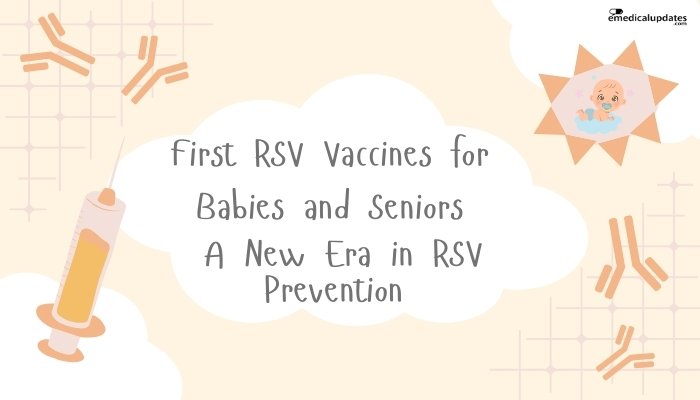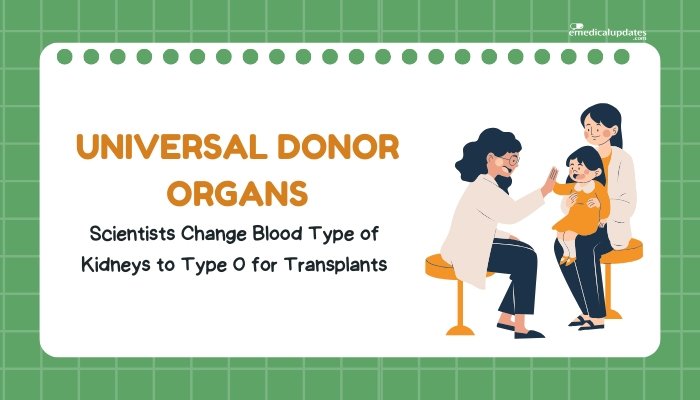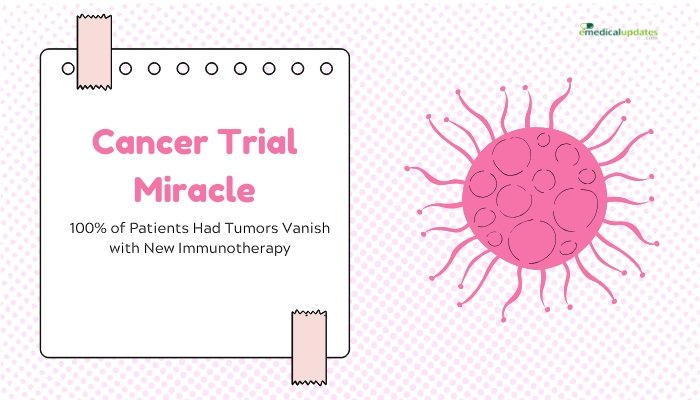Introduction
Respiratory syncytial virus (RSV) is a viral pathogen that poses a serious health risk for infants and older adults. The virus affects the lower respiratory tract, often leading to difficulty in breathing, reduced oxygen levels, and a higher rate of complications. Until recently, preventive measures consisted of supportive care and close observation.

That changed with the introduction of the first RSV vaccines for both neonates and seniors. These vaccines herald a new era of proactive efforts against a virus that has long burdened healthcare systems worldwide.
This article explores the significance of RSV, its effects on different age groups, and the development of novel vaccines designed to counteract infection. It details the journey from research to rollout and outlines the potential impact on families and communities.
The goal is to present clear, factual insights into an innovative area of vaccine development, focusing on safety, efficacy, and overall implications for public health. By understanding how these new vaccines function and who can benefit from them, healthcare professionals and the general population can make informed decisions about RSV prevention.
Understanding RSV
What Is RSV?
RSV is a common virus that affects the lungs and airways. It spreads through respiratory droplets that occur when a person coughs or sneezes. The virus can also live on surfaces for several hours, increasing the likelihood of indirect transmission through contaminated objects. In most healthy older children and adults, RSV might cause cold-like symptoms. These typically include congestion, mild cough, and a slight fever. However, vulnerable populations—specifically infants and older adults—can face severe complications when they contract the virus.
How RSV Replicates
RSV attaches to cells in the respiratory tract and initiates replication. As it multiplies, it damages cells, triggers inflammatory responses, and compromises normal lung function. This leads to an excess of mucus production, swelling of the bronchioles, and narrowing of the airways. The full course of the virus in a vulnerable individual can include days of intense coughing, breathing difficulties, and the possibility of hospitalization. The combination of heightened inflammation and potential bacterial co-infections underscores why RSV is such a risk for those with weaker immune function.
Global RSV Burden
RSV is not confined to a single region. It affects people in many countries, causing annual outbreaks. Globally, the virus leads to notable increases in pediatric hospital admissions, often straining emergency departments during peak seasons. While supportive treatment—including hydration, oxygen administration, and fever control—can be effective for many patients, those with underlying health issues remain at higher risk.
Burden of RSV in Infants
Reasons Infants Are Vulnerable
Infants, especially those under six months of age, have developing immune systems that are not fully prepared to fight off the virus. Their airways are smaller, and they may struggle to clear mucus effectively. Infants born prematurely or those with heart or lung diseases face an even greater likelihood of complications. In these cases, RSV often escalates into bronchiolitis or pneumonia, necessitating hospital care.
Clinical Symptoms in Infants
In very young children, RSV may begin like a routine cold but can quickly worsen. Common signs include:
- Rapid breathing
- Flaring of the nostrils
- Intercostal retractions (visible pulling-in of muscles between the ribs)
- Persistent coughing
- Wheezing
Healthcare providers encourage parents to watch for any difficulties in feeding or noticeable fatigue, as these can indicate severe infection requiring medical intervention. Early detection and immediate care are vital to prevent more serious outcomes.
Economic and Social Impact on Families
When an infant is hospitalized due to RSV, families can experience significant financial strain, especially if extended hospital stays are needed. Parents may have to take time away from work, and healthcare costs can escalate. The emotional toll is also considerable, as families manage worry, disrupted routines, and the emotional demands of caring for a sick child. By reducing the incidence of severe RSV cases through vaccination, families could see fewer disruptions and lower medical expenses.
RSV in Older Adults
Why Seniors Are At Risk
Older adults often have reduced respiratory muscle strength. This decline occurs gradually with age. Coexisting health conditions like chronic obstructive pulmonary disease (COPD), congestive heart failure, or diabetes further increase susceptibility. Immune function typically weakens in this population, and the natural barriers in the respiratory tract become less efficient in filtering out pathogens.
Complications in Seniors
Among older adults, RSV can lead to pneumonia, severe bronchitis, and hospital admission. Prolonged bed rest or a stay in intensive care can result in a loss of mobility and overall well-being. This underscores the importance of preventive strategies. Simple respiratory infections in an older individual can quickly turn into major medical events, emphasizing why the development of an RSV vaccine is a meaningful advance.
Healthcare Burden
Healthcare systems face stress when older adults contract RSV. The length of hospital stays can be longer, and patients might need extended rehabilitation post-discharge. The pressure on long-term care facilities is also significant, as outbreaks in these settings can spread quickly due to close living conditions. With the introduction of vaccines, there is hope for reducing the incidence of severe RSV among this high-risk demographic, thereby decreasing healthcare costs and improving patient outcomes.
The Emergence of the First RSV Vaccines
Research Milestones
For decades, vaccine researchers worked to identify components of RSV that would generate a protective immune response. Early attempts faced hurdles related to safety and efficacy. Over time, scientists gained a clearer understanding of the viral surface proteins, particularly the F and G proteins, which play critical roles in viral entry into host cells. Improved knowledge, along with advancements in gene sequencing and vaccine technology, finally allowed for prototypes that showed promise in preclinical studies. Clinical trials followed, confirming a measurable immune response.
Phase III Trials and Outcomes
Phase III clinical trials are a critical stage in vaccine development, involving thousands of participants to ensure that the vaccine is both safe and effective. For RSV vaccines, clinical trials looked at:
- Immune response: Presence of neutralizing antibodies that block the virus from attaching to cells.
- Safety profile: Monitoring any side effects related to injection site reactions, fever, or rare allergic responses.
- Efficacy: Reduction in medically attended RSV infections compared to a placebo group.
Data demonstrated that the new RSV vaccines reduced hospital admissions and limited severe respiratory complications. This paved the way for regulatory review and approval. In addition, post-marketing studies help track long-term effectiveness and any rare side effects that large-scale use might reveal.
Mechanism of Action
Several RSV vaccines in development or newly approved are protein-based. They present a stabilized form of the RSV F protein—often in a pre-fusion conformation—aimed at inducing a robust immune response. Once administered, a person’s immune system produces targeted antibodies to neutralize the virus.
This mechanism equips the body to defend itself if it encounters RSV. For older adults, where immune function may not be as strong, adjuvants (substances that enhance the immune response) can help achieve protective levels of antibodies.
Vaccination for Infants
Active Immunization in Infants
Active immunization involves giving a vaccine that encourages the infant’s immune system to produce its own antibodies. However, for very young infants, especially those under six months, developing a strong immune response can be challenging. Research continues into approaches that enhance infants’ capability to respond to vaccines effectively.
Maternal Immunization and Passive Transfer
Another approach to protect newborns is maternal vaccination during pregnancy. When a pregnant individual receives the RSV vaccine, antibodies can cross the placenta, offering partial protection to the newborn.
This maternal immunization strategy aims to shield infants during their first months of life, when they are most susceptible to severe RSV. This method, while not a replacement for active immunization in older children, is an important measure to reduce hospitalizations and severe outcomes in the neonatal period.
Expected Benefits for Public Health
By preventing early-life hospital admissions, maternal immunization programs could reduce healthcare costs and improve overall infant health. Moreover, avoiding severe RSV infection in the first few months of life can lower the probability of long-term respiratory problems. Families benefit from fewer disruptions and less stress, and communities gain from the broader protective effect that comes with high vaccination coverage. In many ways, maternal immunization and emerging vaccines for infants offer a more complete strategy for RSV prevention.
Vaccination for Older Adults
Efficacy and Safety
Recent clinical trials have shown that RSV vaccines for older adults significantly reduce the risk of medically attended lower respiratory tract infections. In some studies, effectiveness rates have been moderate to high, indicating a valuable protective benefit. Additionally, the side effect profile has been acceptable, with typical injection site reactions and fatigue reported as the most frequent issues. Serious adverse events have been rare, though continuous monitoring is crucial to detect any unforeseen concerns over time.
Dose Considerations
Older adults sometimes have a reduced immune response to vaccines. This immunosenescence can require alterations in dosing. Several manufacturers have tested formulations with higher antigen content or added adjuvants to enhance antibody production. The result is a more reliable and enduring immune defense compared to standard formulations. Recommendations may differ by country and regulatory body, but the overarching goal remains the same: to offer durable immunity to a vulnerable population.
Potential Impact on Geriatric Care
If more older adults receive the RSV vaccine, it may help reduce hospitalization rates in this demographic. This can lessen the strain on healthcare facilities, cut associated costs, and allow healthcare teams to allocate resources more effectively. Additional benefits include fewer complications during influenza or other respiratory infection seasons, since having multiple overlapping infections can be devastating for older patients. A high adoption rate of RSV vaccination has the potential to transform care models for older adults, moving from reactive treatment to proactive prevention.
Implementation and Guidance
Official Recommendations
Health authorities in different countries are publishing official guidelines on RSV vaccination. They outline who should receive the vaccine, optimal timing, and contraindications. For infants, guidelines often focus on maternal immunization during specific weeks of pregnancy. For older adults, some health organizations recommend annual or periodic vaccination, though the exact schedule may vary depending on ongoing data.
Storage and Administration
Proper storage and handling are essential to preserve vaccine efficacy. Most RSV vaccines require refrigerated conditions during transport and warehousing. Once they arrive at a clinic, adherence to recommended temperature ranges ensures stability. During administration, healthcare providers typically use standard intramuscular techniques. Observation afterward helps catch any rare immediate reactions. By following best practices, clinics can maintain the potency and reliability of these vaccines.
Addressing Concerns and Myths
Vaccine hesitancy can hinder the adoption of a new immunization. Concerns may stem from misunderstandings about how the vaccine works, its side effects, or its long-term effects. Clear, evidence-based communication that outlines benefits and safety can increase acceptance. For parents, there may be additional fears about maternal immunization, making it important for obstetricians and pediatricians to share up-to-date research showing the positive effect on newborn health.
Possible Side Effects
Localized Reactions
Most individuals experience mild side effects around the injection site. These may include:
- Redness
- Swelling
- Tenderness
These reactions usually resolve within a day or two. Regular application of a cool compress can ease discomfort. Pain relievers may also be used, following healthcare guidance.
Systemic Symptoms
Some people develop low-grade fever, headache, or muscle aches. These systemic symptoms are generally short-lived. Rare complications, such as allergic reactions, highlight why it is prudent to observe patients for a short period after vaccination. Individuals with a history of severe allergies should discuss possible risks with healthcare providers.
Long-Term Safety Monitoring
Once a new vaccine is introduced, national and international health agencies collect data through surveillance programs. These long-term monitoring efforts offer insights into rare adverse events. This ongoing process is crucial for ensuring vaccine safety in the real world. Any unusual pattern in reported side effects will trigger further investigations and potential adjustments in recommendations.
Future Perspectives
Improving Formulations
As research on RSV vaccines continues, scientists are exploring ways to improve existing formulas. They are looking for delivery methods that can stimulate mucosal immunity, potentially offering more comprehensive defense. Ongoing technological innovations may yield a single-dose option that provides lasting protection over multiple seasons.
Broader Immunization Initiatives
Healthcare organizations are interested in integrating RSV vaccination into broader immunization schedules. By combining RSV vaccination with other recommended immunizations, it might be possible to streamline clinic visits. A more unified approach to vaccination can enhance coverage rates and reduce missed opportunities for crucial preventive measures.
Global Equitable Access
A critical goal is global availability. While new vaccines often debut in high-income nations, effort is needed to extend access to low- and middle-income settings. Establishing affordable pricing, local distribution networks, and adequate cold storage facilities are all elements that can influence uptake. Collaboration among policymakers, pharmaceutical companies, and non-profit agencies can accelerate this process.
Conclusion
The arrival of the first RSV vaccines for infants and older adults marks a turning point in the approach to controlling a virus that has historically overwhelmed hospitals and impacted fragile populations. These vaccines, based on extensive research, have demonstrated the ability to lessen disease severity, reduce hospital admissions, and potentially save lives. For infants, maternal immunization offers an early shield during a critical period of development. For seniors, direct vaccination promises fewer complications and a better quality of life.
While challenges remain, including issues of global distribution and vaccine acceptance, ongoing clinical data and research underscore a promising future. By highlighting both efficacy and safety, health authorities can foster trust, leading to higher uptake rates and broader public health benefits. Early adoption may reduce the disease burden and healthcare costs, as well as the psychological toll on families and caregivers. In essence, these first RSV vaccines represent an important step forward in preventive medicine, shaping a future where the threat of severe RSV infection can be substantially diminished.
References
- Graham BS. Immunological approaches to RSV vaccine development. Annu Rev Med. 2020;71:105-116.
- Anderson LJ, Heilman CA. Protective and disease-enhancing immune responses to RSV. J Infect Dis. 2019;219(11):1592-1600.
- World Health Organization. RSV surveillance: global sentinel site data. Geneva: WHO; 2022.
- Centers for Disease Control and Prevention. RSV trends and surveillance. Atlanta: CDC; 2022.
- Walsh EE, Falsey AR, Scott DA. A phase III clinical trial of an RSV vaccine in older adults. N Engl J Med. 2023;388(5):412-423.
- Munoz FM, Swamy GK, Hickman SP. Safety and efficacy of maternal RSV vaccination. Lancet Infect Dis. 2023;23(7):e142-e149.
- Chu HY, Englund JA. Maternal immunization to prevent RSV illness in young infants. Curr Opin Pediatr. 2021;33(1):125-132
- Falsey AR, Walsh EE. Respiratory syncytial virus infection in elderly adults. Drugs Aging. 2020;37(6):421-428.
- Piedra FA, Moore ML. Mechanisms of RSV pathogenesis and the roles of vaccine-induced immunity. Expert Rev Vaccines. 2019;18(8):859-869.
- Hammitt LL, Dagan R, Malone S. RSV hospitalizations and associated healthcare costs in infants. Vaccine. 2021;39(3):481-487.
- Gessner BD, Feikin DR. Epidemiology of RSV and impact of new vaccines on disease control. Vaccine. 2022;40(1):B67-B72.
- Hall CB, Weinberg GA, Blumkin AK. Respiratory syncytial virus-related hospitalizations in children and older adults. Pediatr Infect Dis J. 2020;39(9):756-760.






